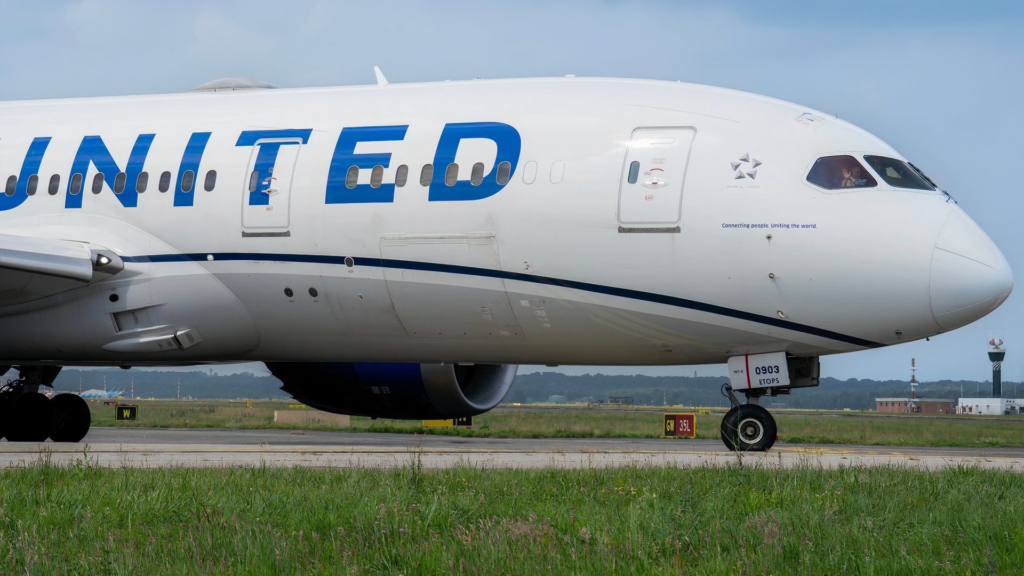In October, the US and Canada will collectively have an average of 617 daily scheduled passenger departures to Europe. This finding is from analyzing every planned service using Cirium Diio data. Compared to last October, an additional 20 daily takeoffs are planned.
Based on IATA slot seasons, northern carriers will switch to winter schedules on Sunday, October 26. As such, activity across the Atlantic will vary dramatically. The high will be 679 daily departures on October 4, while just 466 will be available on October 28.
The Top 10 US & Canadian Airports For European Flights In October
Some 47 airports in the two countries will have scheduled service to Europe in the analyzed month. Obviously,  New York JFK remains number one, just as it always will. It is the world’s second-busiest airport for long-haul activity and by far the US’s top airport for widebody services.
New York JFK remains number one, just as it always will. It is the world’s second-busiest airport for long-haul activity and by far the US’s top airport for widebody services.
As usual, the list has seen various changes. For example, compared to last October,  Toronto is now third, up by one place. This is, of course, mainly because of
Toronto is now third, up by one place. This is, of course, mainly because of  Air Canada’s expansion (+7% more departures), which has grown the Star Alliance member’s share of the total to 43%.
Air Canada’s expansion (+7% more departures), which has grown the Star Alliance member’s share of the total to 43%.
Air Canada has grown frequencies on some existing routes, particularly to Southern European cities, such as Athens and Rome, which continue to see buoyant demand. But it’s also because of Brussels, which did not have Air Canada flights from its busiest hub last October. Elsewhere, SAS also didn’t have Toronto flights last October (it now runs year-round), while Virgin Atlantic joined the Canadian airport’s portfolio in March 2025.
|
October Departures To Europe* |
Airport |
% Change Vs. October 2024 |
|---|---|---|
|
3,036 (76 to 110 daily) |
New York JFK |
-3% |
|
1,657 (47 to 56 daily) |
Newark |
+5% |
|
1,322 (26 to 55 daily) |
Toronto |
+7% |
|
1,286 (27 to 47 daily) |
Boston |
+11% |
|
1,282 (29 to 46 daily) |
Chicago O’Hare |
+2% |
|
1,224 (30 to 44 daily) |
Washington Dulles |
+4% |
|
996 (14 to 41 daily) |
Montreal |
+2% |
|
892 (22 to 34 daily) |
Atlanta |
+4% |
|
889 (22 to 34 daily) |
Los Angeles |
-1% |
|
768 (18 to 28 daily) |
San Francisco |
-4% |
|
* Double for both ways The impact of changing to winter schedules is clear! |
Boston Has Jumped 2 Places To 4th
 Boston is the only top ten airport to have grown by a double-digit amount in the past year (+11%). Its departures have risen by more than five times the average of the top ten airports (+2%). This means it has risen two places from sixth place to fourth.
Boston is the only top ten airport to have grown by a double-digit amount in the past year (+11%). Its departures have risen by more than five times the average of the top ten airports (+2%). This means it has risen two places from sixth place to fourth.
It has benefited from Condor extending its summer season through October, but this was offset by the loss of PLAY in September 2025 (it is ending all US flights). Boston’s expansion was primarily from multiple incumbent operators increasing their offering, particularly JetBlue, whose departures have more than doubled (+117%).
JetBlue’s European network from Boston in October has grown to seven routes. New routes are to Dublin, Edinburgh, and Madrid. Meanwhile, seasonal London Gatwick flights have been extended through October, although flights are nowadays aboard the less premium, 160-seat A321neo, rather than the 137-seat A321LR. Gatwick has seen many changes on services to the US.
Indianapolis Has Regained European Flights, While Stewart Has Lost Them
On May 3, in time for the peak season, Aer Lingus took off from Dublin (which has US preclearance) to Indianapolis. It was, of course, the Irish flag carrier’s first time in Indiana. The A321XLR-operated link currently runs four times weekly but will grow to five weekly next summer. It is currently the world’s eighth-longest XLR service by time.
Aer Lingus’ entry marked the first time that Indianapolis has had European passenger service since 2020, when Delta ceased flying to the huge SkyTeam hub of Paris CDG. It only existed for two years.
As always, it is not all good news. Unlike last October, when PLAY flew to Stewart, the airport no longer has any scheduled European flights. The Icelandic carrier flew there as a far less congested and lower-cost alternative to New York JFK and Newark, albeit undoubtedly with much lower yields. With flights between June 2022 and September 2025, the US Department of Transportation shows it transported nearly 300,000 passengers.





